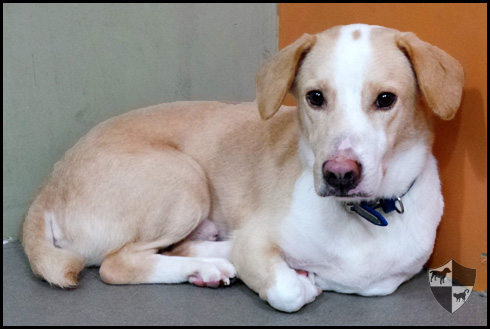Working With Timid Dogs
For a dog owner or trainer, trying to train a timid or shy dog can be challenging. There are many reasons why a dog may be timid Dogs with this type of temperament could have had a background that includes being isolated during puppy hood, having been taking from its mother too soon or being abused by its prior owner. Until becoming acclimated with their new families, timid dogs, will remain shy, especially those coming from rescues.
Some dog breeds tend to be more timid than other breeds. Some miniature and toy breeds can be either timid or aggressive in temperament. Larger breeds can span the same temperament scale as well. To discern which temperament your dog breed possesses, a great suggestion would be to place your dog in new situations and environments and then observe and gauge their level of anxiety.
Keep in mind that a timid dog will probably never, by no means, be as as socialable as an extroverted dog, but they can learn to become more receptive to new people, places and thing. If you onw a timid dog, Some training techniques that you can utilize to help it cope include:
- Allow your timid dog to work at its own learning speed. Do not force your timid dog to approach an object or person, instead allow it to come closer to observe, thus inspiring confidence in the dog.
- Do not chastise your timid dog for behaviors that are typical of this type of dog, because the dog will be anxious and gradually lose trust in you. Until they are comfortable, make an effort to keep the timid dog away from items in new environments known to scare your dog.
- If you notice that your timid dog is whining, urinating submissively, pacing, panting or salivating, you may have probably pressured your dog too much and probably should discontine your efforts.
- Timid dogs can often become aggressive if pushed too far. Never corner or trap a timid dog as they can quickly resort to snapping or biting if they believe that they are in danger.
- Give a timid dog more doggie treats more often. This is a way to show them praise and to boost its confidence. An extroverted dog does not need as many treats in this instance.
- Give your timid dog plenty of opportunities to socialize in safe and secure environments. A professional dog trainer can provide information and assistance in training your timid dog. If you are planning a group dog training class, inform the instructor beforehand of your dog’s timid disposition. The instructor can provide instruction about the dog’s specific needs. In addition, the instructor can share this knowledge with others in the class so that all class participants can work together with your dog.
For many dog owners, timid dogs make loving companions. Keeping timid dogs safe and protected, while teaching them at their own pace will prove beneficial in making them more sociable. In addition, allowing timid dogs to interact often with other dogs will assist in this process. Moreover, there are many resources to help your timid dog to become more outgoing including private and group dog trainers, interaction with other dogs and a vet.
Information written by Jerry Hill of Oh My Dog Supplies, the top ranked shop to buy dog blankets online.



